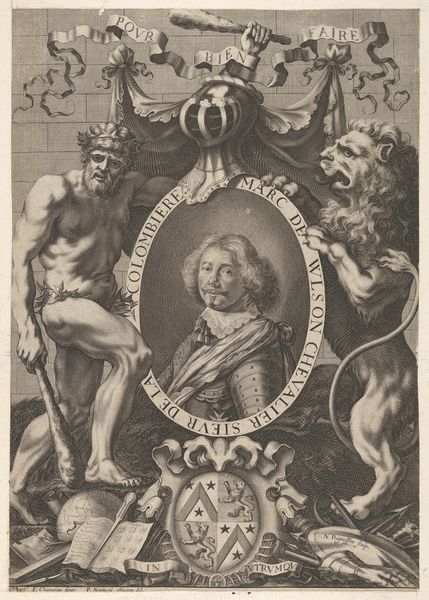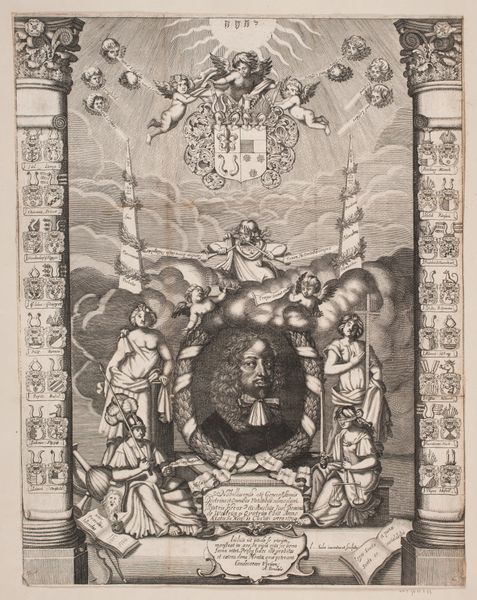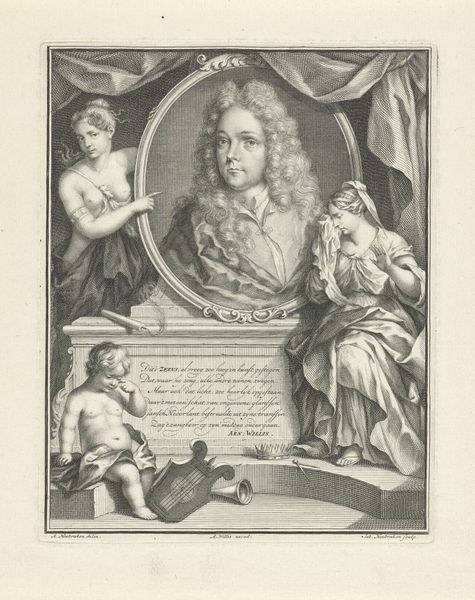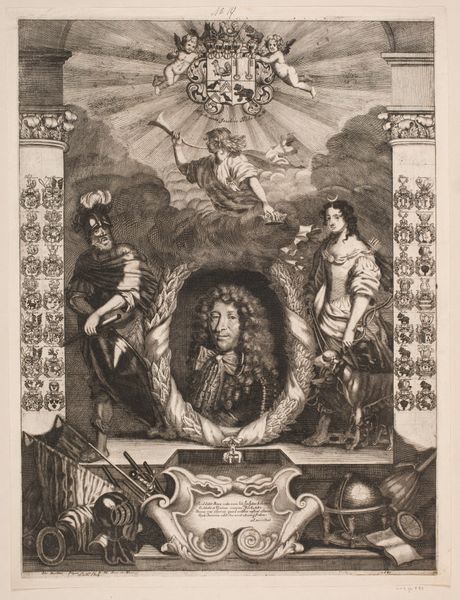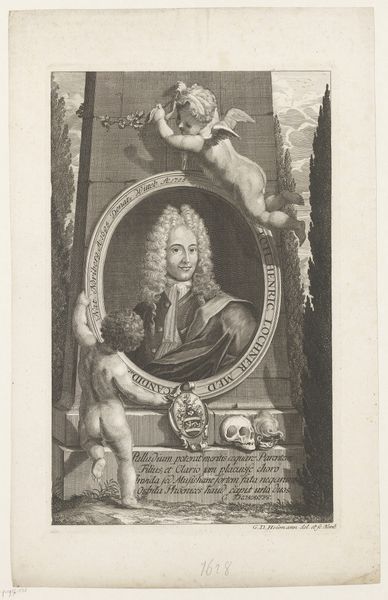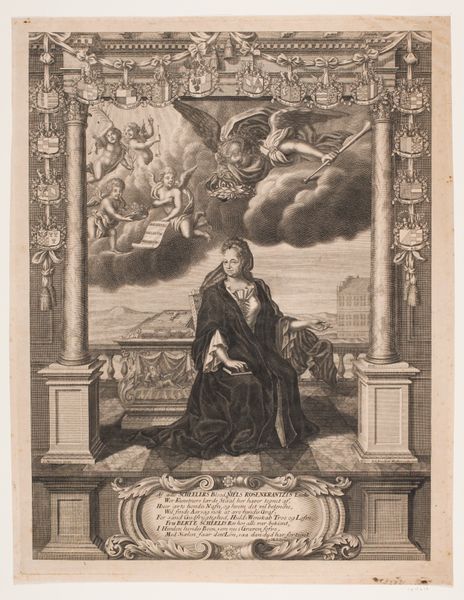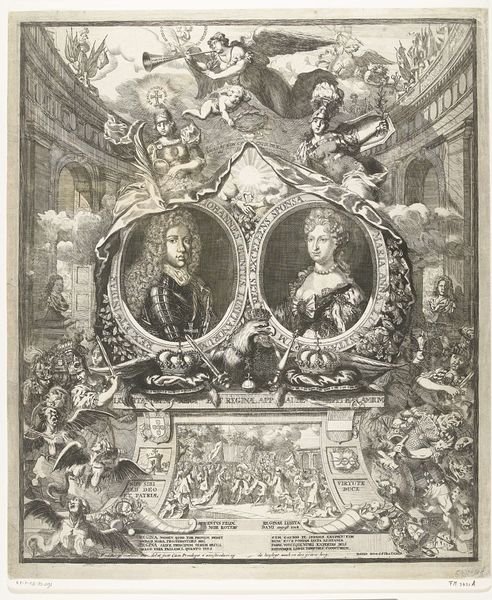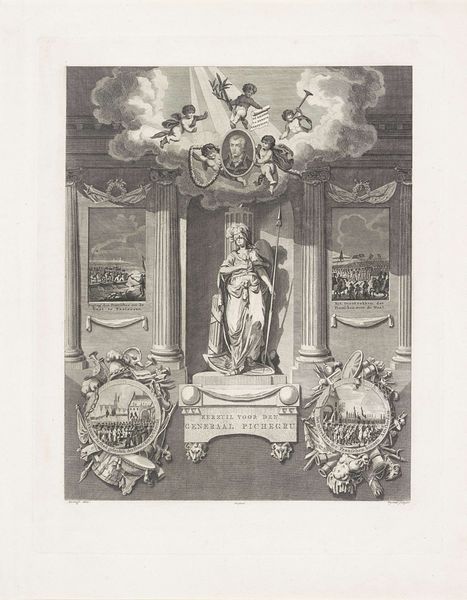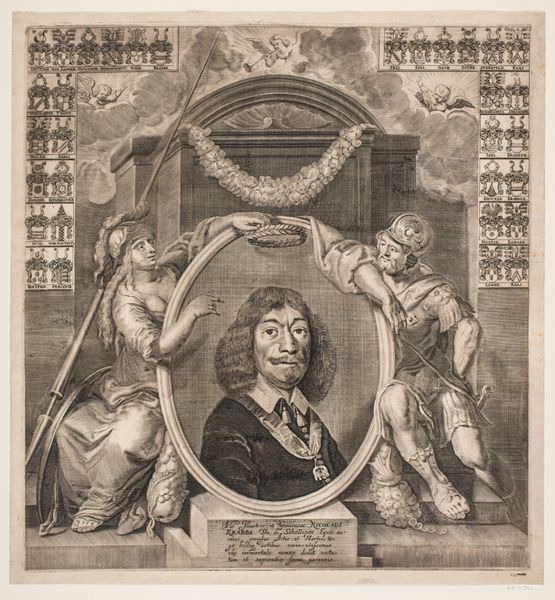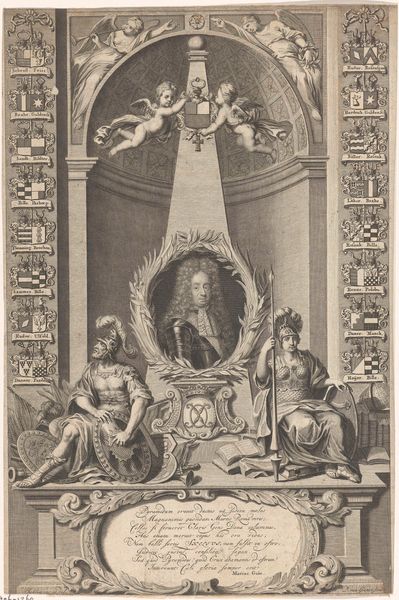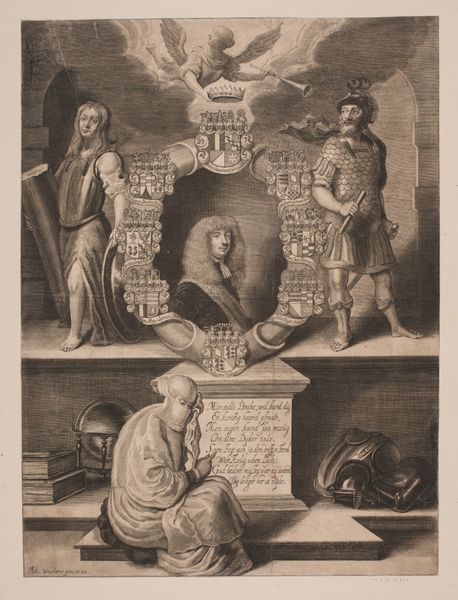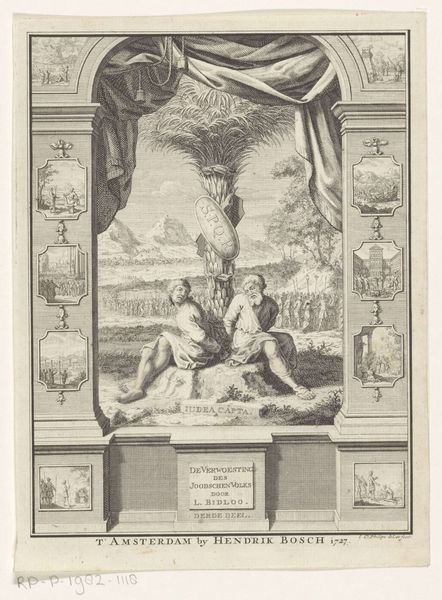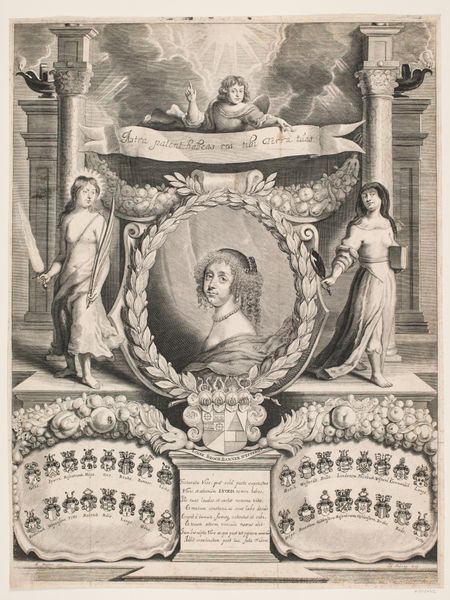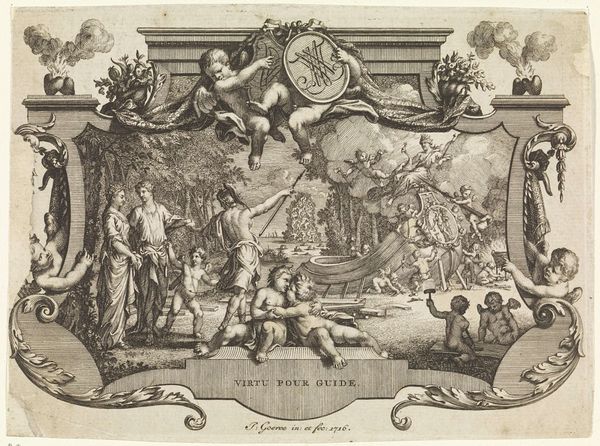
print, engraving
#
portrait
#
allegory
#
baroque
# print
#
figuration
#
pencil drawing
#
line
#
history-painting
#
engraving
Dimensions: 418 mm (height) x 318 mm (width) (plademaal)
Curator: Here we have Albert Haelwegh’s 1655 engraving, a memorial print titled "Frederik Barnewitz. Mindeblad," held here at the SMK. Editor: It's dense, isn't it? All these elements swirling around… a bit overwhelming on first glance. It strikes me as intentionally elaborate, almost performative in its grief. Curator: Absolutely. Let’s break down how Haelwegh organizes the visual space. Notice the central portrait medallion. The fine, linear detail draws the eye, anchoring the composition amidst the allegorical scenes and family crests flanking the sides. What effect does that centrality produce, in your view? Editor: The centering immediately monumentalizes the individual within a larger societal framework of lineage and spirituality. Surrounding him with such overt symbols suggests this isn’t simply about personal loss. How were these types of memorial prints used at this period in time? Curator: Prints like these circulated amongst the elite, performing and reinforcing social bonds. But formally, observe the composition, which counterpoints earthly elements, like the two putti with celestial realms populated by angels around a symbolic coffin ascending to heaven. The artist uses line, tone, and form in precise relation to one another, mirroring and bisecting with intention. Editor: Yes, but beyond the purely formal, I'd say that what’s powerful is seeing the individual presented as integral to the entire order. It reflects a society grappling with status, remembrance, and legacy through these highly staged displays of public mourning. What stories did the prints circulate? Curator: Indeed. These prints amplified a desired image, not just of the deceased, but of the family, their lineage, and their aspirations. Editor: The print then really acts like a kind of 17th-century press release, in a way? Curator: In essence, yes. Though one beautifully rendered and thick with symbolic density, using intaglio printing to perform reputation, cementing an important social role through both production and reception. Editor: The meticulous construction really emphasizes the significance they wished to project. Now that’s an aspect of artistry worth remembering.
Comments
No comments
Be the first to comment and join the conversation on the ultimate creative platform.
